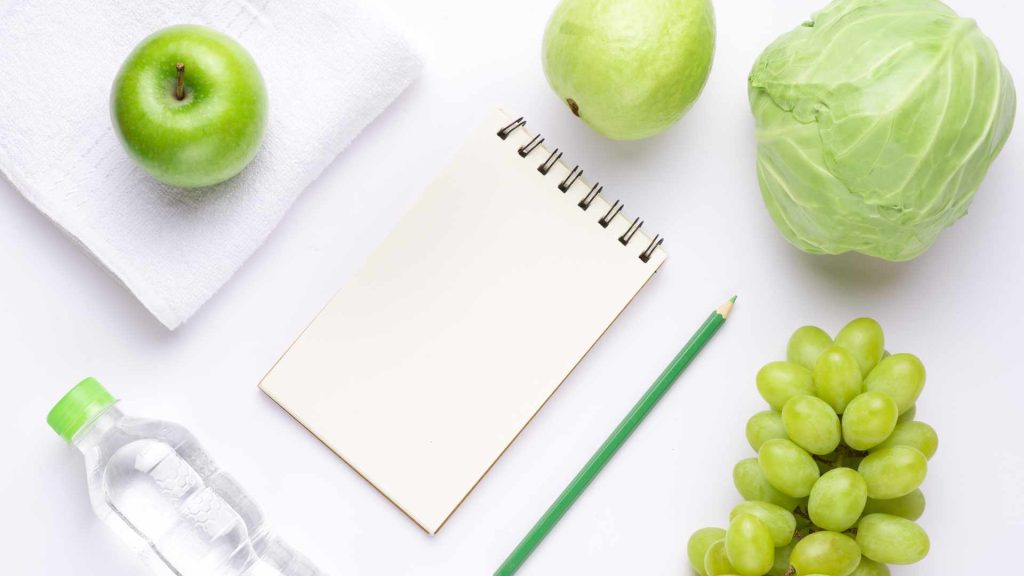
In today’s fast-paced world, maintaining a fitness routine often takes a backseat to other priorities. However, establishing and maintaining a fitness routine is crucial for overall well-being. Whether your goal is to lose weight, build muscle, increase endurance, or simply lead a healthier lifestyle, starting a fitness routine is the first step towards achieving those goals.
In this comprehensive guide, we will walk you through the process of starting a fitness routine, from setting clear goals to finding the right exercises and overcoming common obstacles. By the end of this article, you will have the knowledge and motivation to embark on your fitness journey and transform your life for the better.
Before you lace up your sneakers and hit the gym, it’s essential to set clear fitness goals. Without a defined objective, it’s challenging to stay motivated and track your progress effectively. Your fitness goals should be specific, measurable, achievable, relevant, and time-bound, also known as SMART goals.
Defining Your Objectives
Start by asking yourself what you want to achieve through your fitness routine. Are you looking to lose weight, gain muscle, improve cardiovascular health, enhance flexibility, or boost overall energy levels? Your goals should align with your personal aspirations and desires.
Making Your Goals SMART: Let’s break down the SMART criteria:
- Specific: Your goal should be detailed and precise. Instead of saying, “I want to get in shape,” specify, “I want to lose 20 pounds in six months.”
- Measurable: You need to be able to track your progress. Use metrics like weight, body fat percentage, or endurance levels to measure your success.
- Achievable: Ensure your goals are realistic and attainable. While aiming for significant improvements is great, setting unattainable goals can lead to frustration and disappointment.
- Relevant: Your goals should align with your life and values. Ask yourself if your fitness goals are relevant to your overall well-being.
- Time-bound: Set a deadline for your goals. This creates a sense of urgency and helps you stay accountable. For example, “I will run a 5k race in three months.”
By making your goals SMART, you give yourself a clear roadmap for your fitness journey.
Assessing Your Current Fitness Level
Understanding your starting point is crucial when embarking on a fitness journey. This assessment not only helps you set realistic goals but also ensures you choose appropriate exercises and avoid potential injuries.
Physical Fitness Assessment: Start by assessing your physical fitness level. This can involve measuring your weight, body composition, and taking basic fitness tests like push-ups, sit-ups, and a timed walk or run. These assessments will give you a snapshot of where you currently stand.
Understanding Your Limitations: Be aware of any physical limitations or health conditions that may affect your ability to exercise. If you have any existing injuries or medical conditions, consult a healthcare professional before starting a fitness routine. They can provide guidance on safe exercises and modifications.
Consultation with a Healthcare Professional: If you have any concerns about your health or fitness level, it’s advisable to consult a healthcare professional, such as your primary care physician. They can offer valuable insights and recommendations tailored to your specific needs and medical history.
Assessing your current fitness level is not about judgment; it’s about gaining a realistic perspective of where you are so that you can make informed decisions about where you want to go.
Choosing the Right Fitness Activities
Fitness is a broad and diverse field, offering various activities to suit different preferences and goals. When selecting your fitness activities, consider what you enjoy and what aligns with your goals. Here are some popular fitness categories to explore:
Cardiovascular Exercises: Cardio workouts, such as running, cycling, swimming, and dancing, elevate your heart rate and improve your cardiovascular fitness. These activities are excellent for burning calories, boosting endurance, and enhancing overall health.
Strength Training: Strength training involves lifting weights, using resistance bands, or performing bodyweight exercises like push-ups and squats. It helps build muscle, increase strength, and improve body composition.
Flexibility and Mobility Exercises: Yoga, Pilates, and static stretching routines are ideal for improving flexibility and mobility. These activities can reduce the risk of injury and enhance posture.
Sports and Recreational Activities: If traditional workouts aren’t your style, consider sports and recreational activities like tennis, basketball, hiking, or even dancing. These can be fun ways to stay active while pursuing your fitness goals.
Remember, there’s no one-size-fits-all approach to fitness. Experiment with different activities to find what you enjoy the most, as this will make it easier to stay committed to your routine.
Creating a Balanced Workout Plan
Once you’ve chosen your fitness activities, it’s time to create a balanced workout plan. An effective fitness routine considers the frequency, intensity, time, and type (FITT) of exercises you’ll perform.
Frequency: How often you work out is a key factor in achieving your goals. For beginners, starting with three to four sessions per week is a good starting point. As you progress, you can increase the frequency.
Intensity: The intensity of your workouts determines how challenging they are. You can measure intensity through factors like heart rate, weight lifted, or perceived exertion. Beginners should start with moderate-intensity workouts and gradually increase intensity over time.
Time: The duration of your workouts is important. Aim for at least 150 minutes of moderate-intensity aerobic activity per week, as recommended by health authorities. For strength training, two to three sessions per week targeting major muscle groups is a good guideline.
Type: Variety in your workouts helps prevent boredom and ensures that you target different muscle groups and energy systems. Incorporate a mix of cardiovascular, strength, and flexibility exercises into your routine.
Structuring Your Weekly Workouts: Consider dividing your weekly workouts into different categories. For example, you might have two days for cardiovascular workouts, two days for strength training, and one day for flexibility and mobility exercises. This structure provides a well-rounded fitness routine.
The Importance of Rest Days: Rest days are vital for recovery and preventing burnout or overtraining. Don’t underestimate the value of allowing your body to recuperate. Active recovery, such as light walking or yoga, can also be beneficial on rest days.
Nutrition: Fueling Your Fitness Journey
Nutrition plays a critical role in your fitness journey. Your body requires the right nutrients to perform well during workouts, recover effectively, and achieve your goals.
Importance of a Balanced Diet: A balanced diet provides the essential nutrients your body needs for energy, muscle repair, and overall health. Focus on a variety of whole foods, including lean proteins, complex carbohydrates, healthy fats, fruits, and vegetables.
Macronutrients and Micronutrients: Macronutrients, such as carbohydrates, proteins, and fats, are the main sources of energy and building blocks for your body. Micronutrients, like vitamins and minerals, are essential for various bodily functions. Ensure you’re getting a well-rounded intake of both macro and micronutrients.
Hydration: Proper hydration is often overlooked but is essential for optimal performance. Dehydration can lead to decreased energy levels and hinder your workout progress. Aim to drink enough water throughout the day, especially before, during, and after exercise.
It’s important to remember that nutrition is not just about restricting calories; it’s about nourishing your body to support your fitness goals.
Overcoming Common Obstacles
Starting a fitness routine is not without its challenges. Here are some common obstacles you might encounter and strategies to overcome them:
Lack of Time: Many people struggle to find time for exercise in their busy schedules. Consider scheduling your workouts as appointments in your calendar, breaking them into shorter sessions, or exploring time-efficient workout options like high-intensity interval training (HIIT).
Motivation and Consistency: Staying motivated can be tough, especially when you’re just starting. Create a support system, set small milestones, and reward yourself for reaching them. Joining a fitness class or finding a workout partner can also boost motivation.
Avoiding Overtraining: Overtraining can lead to burnout and injuries. Listen to your body and allow for adequate rest between workouts. Avoid pushing yourself to the point of exhaustion, and incorporate active recovery days.
Staying Injury-Free: Injuries can be setbacks in your fitness journey. Focus on proper form and technique, warm up before exercise, and gradually progress in intensity and weight. If you experience pain or discomfort, don’t ignore it; seek professional advice.
Tracking Progress and Staying Accountable
To stay motivated and track your progress, consider the following strategies:
Journaling and Tracking Workouts: Keep a workout journal to record your exercises, sets, reps, and how you felt during each session. Tracking your progress can be highly motivating, as you can see how far you’ve come.
Fitness Apps and Wearable Devices: There are numerous fitness apps and wearable devices that can help you track your workouts, monitor your heart rate, and even provide guided workouts. These tools can provide valuable insights into your progress.
Finding a Workout Buddy or Joining a Fitness Community: Exercising with a friend or being part of a fitness group can provide accountability and make workouts more enjoyable. Sharing your goals with others can also help you stay committed.
Remember that progress may not always be linear. Some days you’ll feel stronger, while others you may encounter challenges. Stay patient and stay committed to your goals.
Adapting to Your Changing Needs
As you progress on your fitness journey, your needs and goals may change. It’s essential to adapt your routine accordingly:
Modifying Your Routine as You Progress: Gradually increase the intensity, duration, or complexity of your workouts as your fitness level improves. This helps prevent plateaus and keeps your routine challenging.
Dealing with Plateaus: Plateaus are common in fitness. If you find yourself stuck at a certain point, consider changing your workouts, incorporating new exercises, or seeking advice from a fitness professional.
Incorporating Variety: Variety in your workouts can prevent boredom and help you target different muscle groups. Explore new fitness classes, sports, or outdoor activities to keep things fresh and exciting.
Recovering and Restoring Your Body
Recovery is an integral part of any fitness routine. Here are some key aspects of post-workout recovery:
Importance of Post-Workout Recovery: After a workout, your body needs time to repair and adapt. Adequate recovery is essential for muscle growth, injury prevention, and overall well-being.
Stretching and Foam Rolling: Incorporate stretching and foam rolling into your routine to improve flexibility and reduce muscle soreness. Stretching can also enhance your range of motion.
The Role of Sleep in Fitness: Quality sleep is crucial for recovery and overall health. Aim for 7-9 hours of sleep per night, as it can improve mood, cognitive function, and exercise performance.
Seeking Professional Guidance
Sometimes, it’s beneficial to seek professional guidance to optimize your fitness journey:
Personal Trainers and Fitness Coaches: A personal trainer or fitness coach can provide personalized workout plans, ensure proper form, and offer motivation and accountability.
Nutritionists and Dietitians: Nutrition experts can help you develop a customized meal plan to support your fitness goals and address dietary concerns.
Physical Therapists and Chiropractors: If you have specific injuries or chronic pain, a physical therapist or chiropractor can provide rehabilitation exercises and treatment options.
Don’t hesitate to reach out to these professionals when needed. Their expertise can significantly enhance your fitness experience.
Conclusion: The Journey Begins Today
Starting a fitness routine is a transformative journey that can improve not only your physical health but also your mental well-being and overall quality of life. By setting clear goals, assessing your current fitness level, choosing the right activities, and creating a balanced workout plan, you lay the foundation for success.
Remember that fitness is a lifelong commitment. Embrace the process, stay patient, and stay focused on your goals. As you progress, adapt to your changing needs, prioritize nutrition and recovery, and seek professional guidance when necessary. Your fitness journey is unique to you, and with dedication and consistency, you can achieve the healthier, happier life you deserve.
So, lace up those sneakers, take the first step, and embark on your fitness journey today. Your future self will thank you for it.





